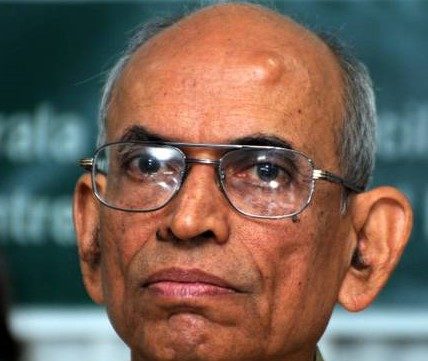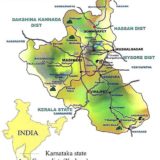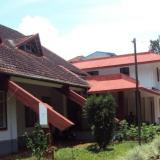
By P.T. Bopanna
Eminent ecologist Prof Madhav Gadgil (in picture) has suggested the ‘Swiss model’ to prevent future landslides in the Western Ghats, including Kodagu (Coorg) in Karnataka which has been devastated by landslides for three consecutive years.
With the Karnataka government being least interested in Kodagu’s future, and the elected representatives being hand-in-glove with the timber lobby, the time has come for the people of Kodagu to take control of the situation and prevent future calamities. The elected representatives should be kept out of the afforestation exercise, as they tend to hijack the initiative to benefit the timber mafia.
Prof Gadgil noted: “The extensive forest cover of Switzerland has developed only over the last 160 years. Before that, only about 4% of that country’s lands had retained forest and there were disastrous landslides. This led to a public awakening and a restoration of the tree cover. This regeneration was managed by local communities, not by government departments. Working together, communities of Switzerland, practising genuine participatory democracy, have revived the country’s ecology.”
Prof Gadgil, who headed the Western Ghats Ecology Expert Panel (WGEEP), stated high rainfall and steep slopes render localities susceptible to landslides in the Western Ghats. “Any disturbance to natural vegetation – construction of buildings and roads, quarrying or mining, replacement of natural vegetation by plantations, or levelling of the land using heavy machinery lead to landslides,” he added.
He noted: “Had our recommendations (Western Ghats Ecology Expert Panel report submitted in 2011) been accepted, there is no doubt that the extent and intensity of landslides in the region would have been much lower.”
Referring to high levels of rainfall within a short span, he said the Western Ghats force moisture laden winds coming from Arabian Sea to rise, resulting in high levels of rainfall on the western slopes and the crest line of the Ghats. Elsewhere, air may rise if the ground below is locally heated.
“This happens wherever the original vegetation cover of the land is replaced by the cement-concrete jungles of cities, highways and rocks exposed due to mining and quarrying. So, what would otherwise have constituted a gentle drizzle lasting 6 hours, now pours down as an intense lashing of rains, ranging from 30 minutes to 3 hours. The result is intense floods and increased chances of landslides, breaching of bunds, and collapse of buildings,” he added.
In the circumstances, the recent tree planting drive by the
local communities in Kodagu should be encouraged.
























